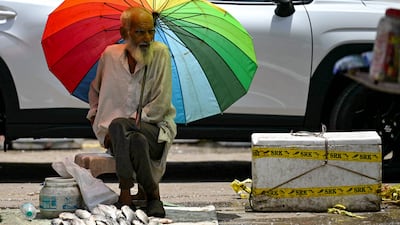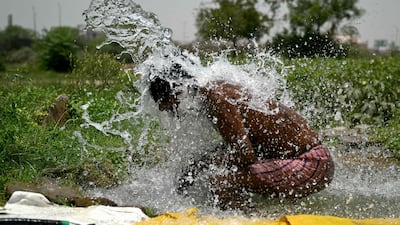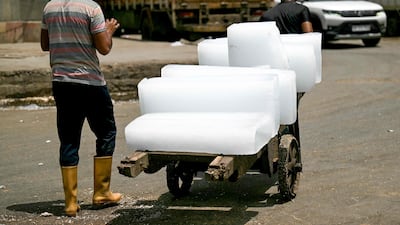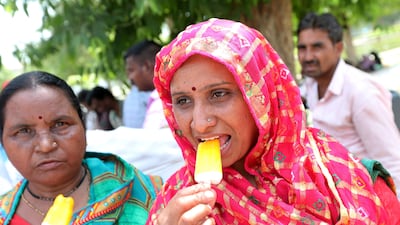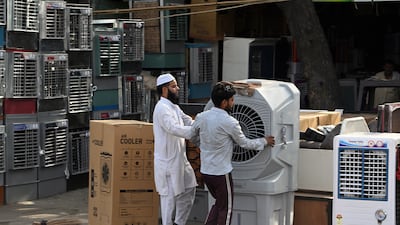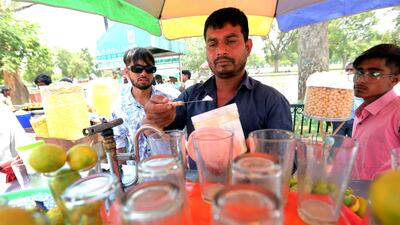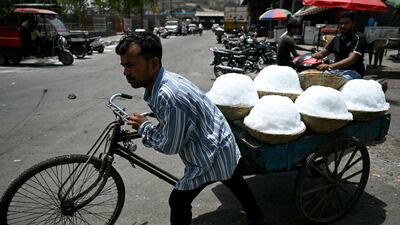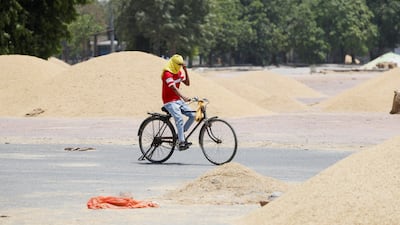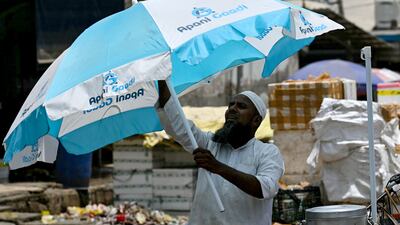A searing heatwave is making life miserable for millions of people in India's capital, New Delhi.
The city has reported record high temperatures of nearly 50°C, in a busy metropolis known for its unbearably hot summers. At least one person, a 40-year-old migrant worker, died of heatstroke at a city hospital, officials said.
Doctors said his body temperature reached 41.6°C – several degrees higher than the normal average of 37°C.
It happened on the day the federal Indian Meteorological Department recorded 52.3°C in the capital's Mungeshpur station, although it later said the record temperature could have been due to a “sensor error”.
Regardless of whether the record was broken, the IMD has declared a heatwave, based on its definition of maximum temperatures exceeding 40°C for more than two consecutive days.
The severe conditions have disrupted the lives of the city's residents, particularly those who work outdoors.
“It is intolerable. I am just drinking water throughout the day, but I am sweating profusely," Kuldeep Singh, a technician with a telecoms company in New Delhi, told The National. "My head spins. I cannot even keep my eyes open while riding the motorbike, the sunlight is piercing."

Severe water and electricity shortages in parts of the city have added to the misery as demand surges. According to electricity department officials, the city experienced record power demand of 8,302 megawatts on Wednesday as residents relied on power-intensive air conditioners for respite.
The previous peak power demand was recorded only a week ago, when it touched 8,000MW on May 22.
Hotter summers in India
While India is accustomed to scorching summer temperatures, they have been getting hotter in recent years.
Last year, India recorded its hottest March since records began in 1901, with an average temperature of 33.1°C.
Large areas of north-western, western and central India have record temperatures above the usual average this year. In the states of Rajasthan and Harayana, temperatures of 48°C and 49°C have been registered.
Weather experts have attributed the record heatwave to climate change, which they say has led to an absence of periodic light rain and the lack of active Western Disturbance – a weather system that emanates from the Mediterranean and brings moisture-rich clouds to the subcontinent.
“This heatwave can be attributed to the continuous dry weather in the second half of May,” Mahesh Palawat, vice president of Skymet Weather, a private weather forecaster, told The National.
"There was no Western Disturbance. Winds from Sindh and Balochistan [provinces in Pakistan] and the Thar Desert, where temperatures are 51°C, continued in north-western India leading to a significant increase in temperature.
“Prolonged heatwaves are unusual in the month of May when we usually see thunderstorms and dust storms, which we have not seen this year. This is because of climate change.”
Experts have also blamed the rampant expansion of cities and towns and the shrinking of green cover and bodies of water in cities including New Delhi for the high temperatures as hot winds become trapped in multi-storey, densely built areas.

The capital is home to nearly 33 million people but the reckless construction of houses, offices and roads to accommodate its expanding population and economy has pushed it to the brink of collapse.
“There is concrete everywhere and green cover is depleting, there are no parks and trees are being cut down for development,” Mr Palawat said. "This increases urban heat. When there are plenty of houses and buildings and air conditioners used, there is an increase in air temperature as there is no proper ventilation."
The Centre for Science and Environment (CSE), a New Delhi-based environmental charity, in an analysis released last week said a deadly combination of air and land surface temperature, and relative humidity leads to acute thermal discomfort and heat stress in cities.
Given the rise of relative humidity during summers, the heat index – how hot it feels to a human body – has risen in megacities, the CSE said.

The CSE report analysed six Indian megacities. “All megacities have become more concretised in the last two decades. This has contributed to the rise in heat stress. In Delhi, the built-up area has increased from 31.4 per cent in 2003 to 38.2 per cent in 2022,” the report stated.
It also found that cities were not cooling down at night, posing further health risks.
“The temperature difference from morning to night used to be about 12°C or more two decades ago. That is not happening any more in cities,” said Avikal Somvanshi, senior programme manager at the CSE's Urban Lab.
“If you see Delhi, the city does not cool down more than 6°C to 7°C in peak summer season. Hot nights are as dangerous as midday peak temperatures. People get little chance to recover from daytime heat if temperatures remain high overnight."
The IMD has predicted the rainy monsoon season will arrive in the city in the first week of June.
